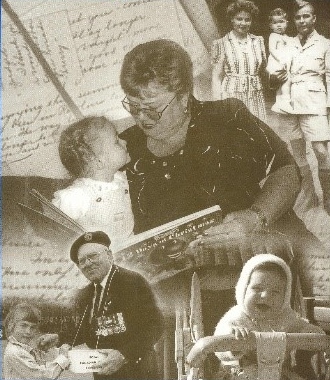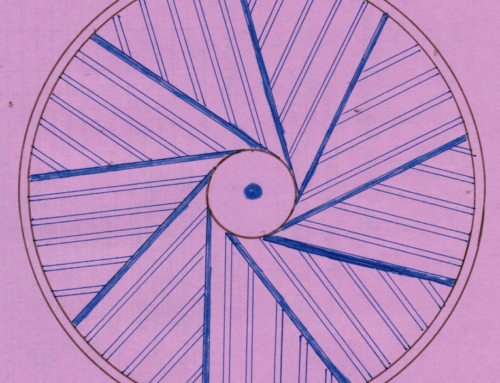Written by Ellen Ryan
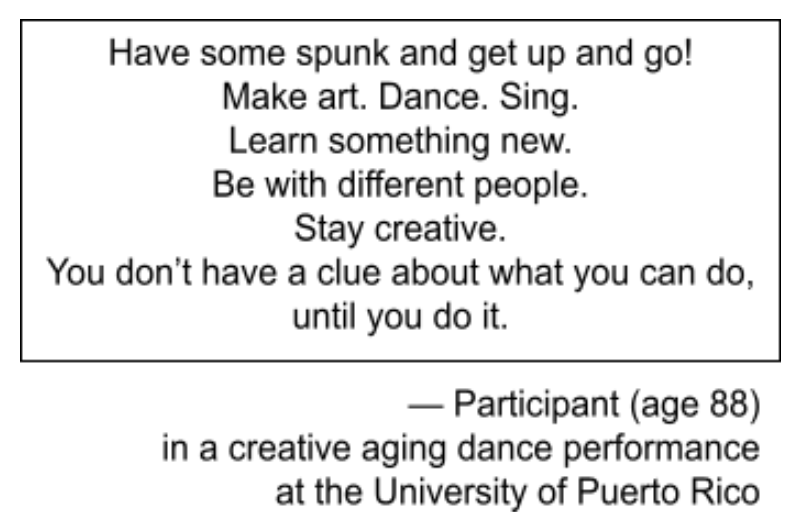
Research backs up this dancer’s comments encouraging others like herself to jump into new creative activities at any age and see how they grow.
I like to define Resilient Aging as using the up’s and down’s of life to adapt well to age-associated changes. Creativity builds resilience. Sharing the creative process and products builds resilience in the family/community.
Art – Good for Aging Brains
According to McFadden and Basting, both artists and art lovers go beyond routine thinking in creating art. They try to figure out what an artwork might or should mean: they interpret, imagine, evaluate, and make decisions. With few clear guidelines, they search their memories and associations for relevant connections, discard extraneous paths, and organize what remains. Thus, they exercise many brain skills, including working memory which is particularly susceptible to aging declines.
Creativity in Age through Centuries
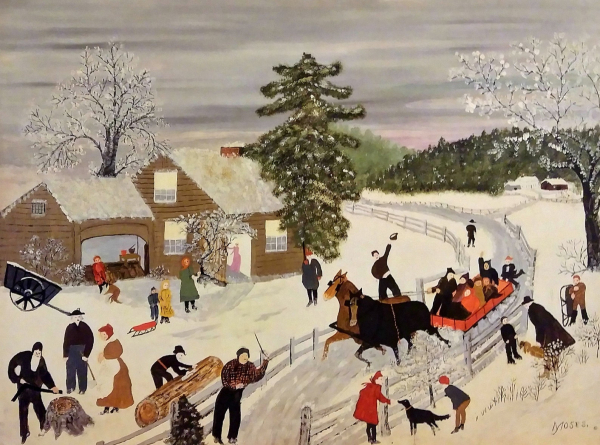
Here is a list of famous artists with major accomplishments in late life:
1. Michelangelo, 16th c Italy, architect/painter/sculptor
Architect for St Peter’s in Rome, designed the Dome – from age 72 to age 88
2. Antonio Stradivari, 18th c Italy, violin maker
1000 violins, built from age 22 to age 93
3. Grandma Moses, 20th c USA, painter
Began painting at age 76, Painted until a centenarian
4. Pablo Picasso, 20th c Spain/France, painter
347 engravings in a year, at age 87
5. Martha Graham, 20th c USA, choreographer
Last work (Maple Leaf Rag) created at age 96
Creativity with Age-Related Impairments
Older famous artists are also well known for adapting to various impairments while they continued creating their art. Claude Monet, 19th century French painter, adapted to a more abstract style as his vision became more and more impaired. He began his water lily paintings at this time, and his other series (e.g., Rouen Cathedral and the haystacks). His impressionist colleague Auguste Renoir dealt with severe rheumatoid arthritis for his last 20 years of painting and sculpture.
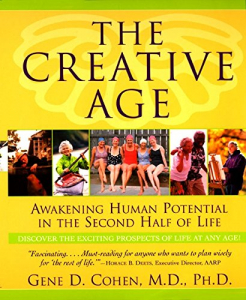
Does Creativity Decline with Age?
According to Simonton, wide individual differences appear in the data about artist age for great works of art. The general pattern is as follows: Youth favours creativity which is conceptual and which involves detailed computations and rule-based innovation. Older age favours creativity which is based on experience or accumulated knowledge and which is experimental, involving thinking outside the box.
Benefits of Engaging in Group Creative Activities
Gene Cohen led intervention studies demonstrating benefits for 80-99-year-olds participating in creative arts in small groups with a professional artist/leader and high standards (concert or exhibit at the end). Activities studies include poetry writing, choirs, jewelry making, and visual arts. Improvements noted in comparison to control groups include psychological benefits (e.g., depression scores), social benefits (e.g., less loneliness), and health benefits (e.g., lower blood pressure and fewer doctor visits).
Why not start now, creating for the joy of it?
For the joy, the learning, and the sharing, many older adults are taking up new (or resumed) creative activities during their retirement years. Since many of us need an extra stimulus and all of us can benefit from group activities, senior centres and community organizations are offering arts groups for seniors.
So many creative activities to choose from – dance, singing, writing, painting, drama, flower arranging, photography, … and perhaps the tastiest of them all – creative cooking!

